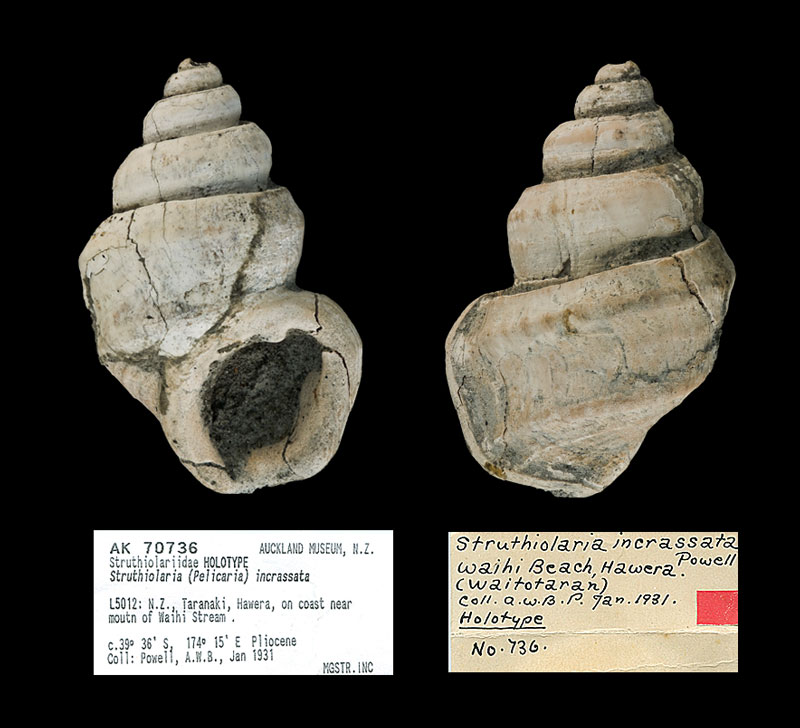Stromboidea
Original description of Struthiolaria (Pelicaria) incrassata by Powell, 1931:
- "This species is characterized by .its massive outer lip, prominent parietal tubercle, small aperture, canaliculate suture and strongly bicarinate body-whorl. The upper carina bears rather closely spaced blunt nodules, undeveloped except over the body-whorl, where they gradually gain strength towards the aperture. There are faint traces of an obsolete third spiral situated midway between the two carinae. The aperture is proportionately small and very much thickened all round. In vermis and tricarinata the aperture is much larger and the outer-lip callus extends to about half way between the main carinae, whereas in incrassata it terminates very little above the level of the lower carina. Whorls four to five (five in holotype), exclusive of the missing nuclear whorls. Spire normally, about equal to height of aperture. The holotype has been slightly flattened and elongated by pressure, the smaller specimen exhibiting the true proportions. Suture deeply canaliculate, almost comparable to that of zelandiae. The base exhibits a primitive condition in the development of only five basal spirals."
Locus typicus: On coast near mouth of Waihi Stream, Waihi Stream, Hawera, Taranaki, North Island, New Zealand
Stratum typicum: Pliocene
Struthiolaria (Pelicaria) incrassata Powell, 1931; Holotype; Pliocene; on coast near mouth of Waihi Stream, Hawera, Taranaki Region, North Island, New Zealand; Coll. Auckland Museum no. AK 70736; Copyright Auckland Museum
References:
- A.W.B. Powell (1931) - Waitotaran faunules of the Wanganui system and descriptions of new species of mollusca from the New Zealand Pliocene

